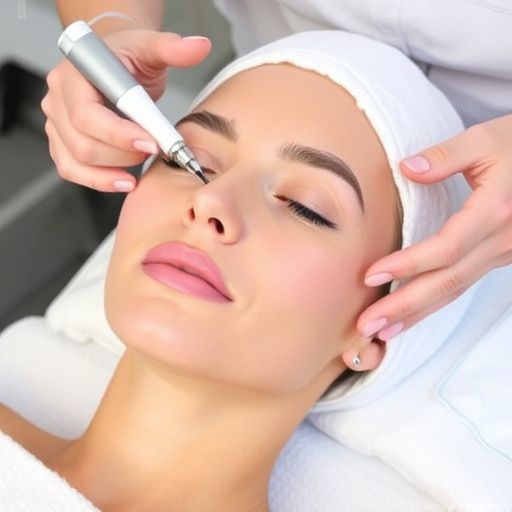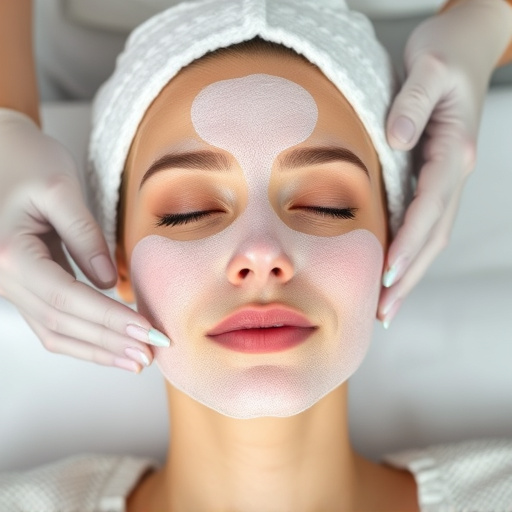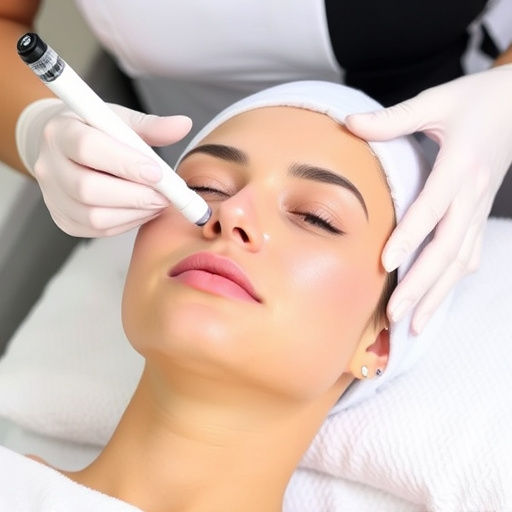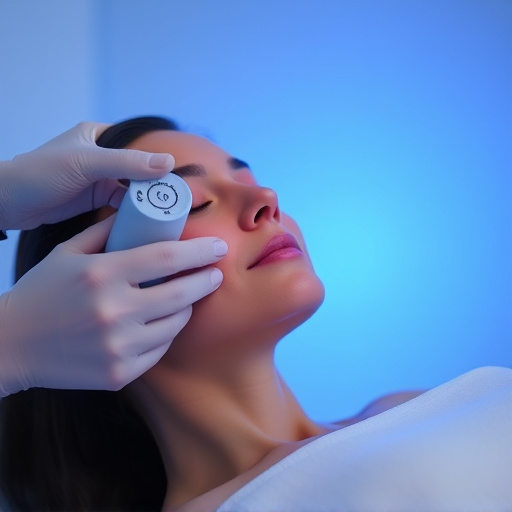Cystic acne, caused by blocked pores and inflammation, requires a multi-pronged treatment approach. This includes topical medications, oral antibiotics, lifestyle changes, and aesthetic treatments. Monitoring progress through regular assessments and journal keeping is crucial, with consultations every 4-6 weeks to adjust routines. A personalized strategy adapting to individual needs, potentially incorporating advanced treatments, ensures long-term effective cystic acne treatment.
Cystic acne, characterized by painful, deep-seated blemishes, demands a tailored approach for effective management. This comprehensive guide delves into understanding this complex skin condition, exploring its causes and distinctive features. We then unravel the key components of a successful cystic acne treatment plan, emphasizing the importance of medical interventions and lifestyle modifications. Additionally, we guide you through monitoring progress and making adjustments to your routine for optimal results.
- Understanding Cystic Acne: Causes and Characteristics
- Components of an Effective Cystic Acne Treatment Plan
- Monitoring Progress and Adjusting Your Routine
Understanding Cystic Acne: Causes and Characteristics

Cystic acne is a severe form of acne that goes beyond typical pimples and blackheads. It’s characterized by deep-seated lumps or cysts under the skin, often causing significant redness, swelling, and pain. These cysts can be quite large and may lead to scarring if left untreated. Understanding its causes is crucial for effective management and ultimately successful cystic acne treatment.
The primary cause lies in blocked pores, where sebum (skin oil) and dead skin cells accumulate, leading to inflammation. Unlike regular acne, cystic acne involves the deep layers of the skin, resulting in these painful, fluid-filled sacs. Genetic predisposition, hormonal fluctuations, particularly during puberty, and certain medications can increase its likelihood. Maintaining optimal skin health and consistency in skincare routines are key steps towards managing and reducing the impact of cystic acne. Techniques like chemical peels, known for their wrinkle reduction properties, may also aid in improving skin texture and overall cystic acne treatment outcomes.
Components of an Effective Cystic Acne Treatment Plan

An effective cystic acne treatment plan should include a multi-faceted approach that targets both the surface and underlying causes of the condition. This typically involves a combination of topical medications, oral antibiotics, and lifestyle changes. Topical treatments, such as retinoids and benzoyl peroxide, help unclog pores and reduce inflammation. Oral antibiotics, like tetracycline or doxycycline, combat bacteria and minimize cyst formation.
In addition to these medical interventions, non-surgical treatments like microneedling therapy can also be beneficial. Microneedling involves using fine needles to create tiny punctures in the skin, stimulating collagen production and improving skin texture. Aesthetic treatments focused on reducing inflammation, minimizing scarring, and calming the skin may also be recommended as part of a comprehensive cystic acne treatment strategy.
Monitoring Progress and Adjusting Your Routine

Monitoring progress is a crucial aspect of any cystic acne treatment plan. After starting your prescribed routine, it’s essential to track changes in your skin condition over time. This involves regularly examining your skin for signs of improvement, such as reduced inflammation, smaller blemishes, and fewer cysts. Keep a journal or use a dedicated app to record the frequency and severity of breakouts. Additionally, pay attention to any potential side effects from the treatments, ensuring you communicate any concerns with your dermatologist.
Regular follow-ups with your dermatologist are also vital for adjusting your skincare routine. They can assess your skin’s response to the current treatments, recommend modifications as needed, and introduce new products or procedures based on your progress. A personalized skincare approach that adapts to your changing needs is key to achieving long-term success in managing cystic acne. This may include incorporating advanced aesthetic treatments for skin rejuvenation if your dermatologist deems it beneficial for your specific case.
Cystic acne, with its deep-seated inflammation, requires a tailored treatment plan combining medical knowledge and patient care. By understanding the causes and characteristics of this condition, individuals can effectively collaborate with dermatologists to develop a comprehensive strategy. This includes utilizing targeted medications, incorporating gentle yet effective skincare routines, and monitoring progress over time. Adjustments along the way ensure that the cystic acne treatment plan remains optimized for individual needs, ultimately leading to clearer skin and improved confidence.














